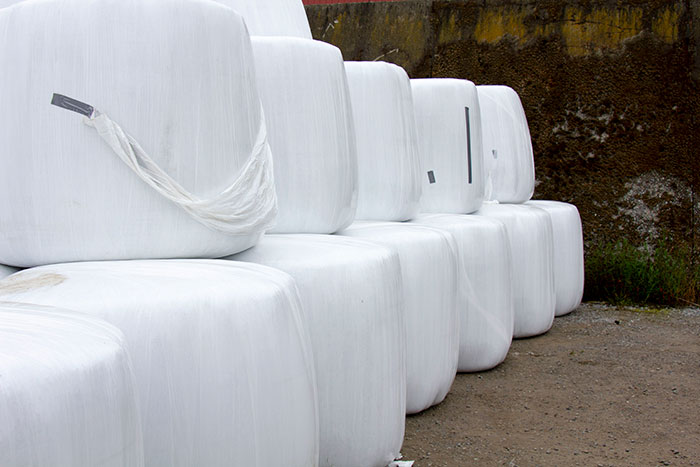
Drying forage in the fall is often difficult as the days shorten and temperatures cool. If there’s still hay to make, baleage may be a good alternative to dry hay.
“Wrapping wet bales for baleage could help to ensure your hayfields are harvested at the correct stage of maturity, providing adequate quality for livestock,” says Jessica Williamson, extension forage specialist at Penn State, in a recent website post.
According to Williamson, the first step to producing quality baleage is baling at an adequate moisture content. While 12 to 16 percent moisture is the goal for dry hay, baleage needs to be 45 to 64 percent moisture to allow for optimal fermentation.
Use a low-density, 1-mil (millimeter) thick polyethylene to wrap bales. Wrap each bale at least six times, with eight being ideal, and ensure a 50 percent overlap.
“As the bale is wrapped, the plastic is stretched thinner than the original material, causing the need for multiple layers to ensure elimination of oxygen, sunlight, and excess moisture,” Williamson explains.
She recommends to use additional wraps if the bales have sharp stems, are more mature, or have a lower quality or moisture content; this will prevent stems from poking holes in the plastic and allowing air to infiltrate. If holes do occur, use a specifically designed tape for repairing holes in bale film.
To ensure proper fermentation and reduce exposure to air, wrap bales within four hours of baling. The more the bale is exposed to air, the higher the risk of the internal temperature rising to a point that will lead to damage of the proteins in the forage, which lowers overall quality.
“Wrapping close to the area where the bales will be stored helps to lessen the probability of plastic getting torn during transportation,” Williamson advises. She also states to store bales in a well-drained area so that water doesn’t accumulate around the bases.
Paying attention to the smaller details helps improve the quality of baleage. “The addition of bacterial inoculants can help improve fermentation throughout the entire bale if the moisture level is not ideal,” Williamson concludes.

Kassidy Buse was the 2018 Hay & Forage Grower summer editorial intern. She is from Bridgewater, S.D., and graduated from Iowa State University with a degree in animal science. Buse is currently attending the University of Nebraska-Lincoln pursuing a master’s degree in ruminant nutrition.

